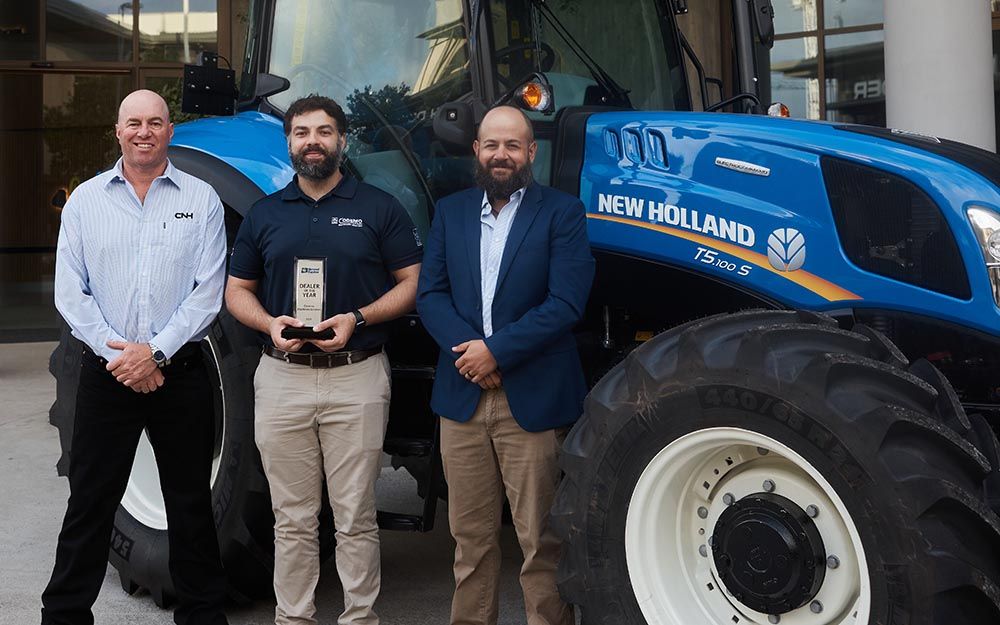
Apply Fertiliser Wisely
31 January 2022
Right nutrients, right place, right time, right equipment
The major nutrients needed for Australian soils and the crops we grow are phosphorus, nitrogen and calcium in the form of lime for acid soils. Other nutrients like potassium and trace elements may be needed in specific crops and pastures.
“Regular soil tests should be carried out to determine what nutrients are needed and the amounts you should apply. It should be noted that lime, while supplying the essential nutrient, calcium, is mostly beneficial in overcoming the potential for aluminium and manganese toxicity in plants.
Fertiliser for pasture is usually applied as a topdressing, especially in perennial pastures, where drilling is not practical. Lime, superphosphate and urea are usually applied this way. An alternative source of nitrogen is sulphate of ammonia, and if deficiencies of potassium occur - usually indicated by symptoms in legumes - muriate of potash can be spread during the growing season. In the case of lime and super, it is preferable to apply the nutrients into the soil at sowing, but maintenance applications must be spread as a topdressing.
Nutrients needed for crops are almost always placed into the soil at sowing. This is because larger amounts of high analysis fertilisers are usually required and the crop will take up the nutrients soon after germination, giving a good start to their growth cycle.
The application of urea during the growing season is an exception to this rule. Urea is applied to give the plant a boost or to overcome an obvious deficiency.
Canola is a crop with a high demand for plant nutrients. It draws twice as much of all essential nutrients from the soil as does wheat and other cereal crops. Some of these nutrients will carry over in the stubble remaining after harvest, but other nutrients will be unavailable. Again, soil tests, and plant tissue testing are always wise moves.
It’s important to note that canola can’t be successfully grown in acid soils. The plant is extremely sensitive to changes in pH. Where the soil is pH is ≤5, Al and manganese (Mn) toxicities can be a problem for canola. Aluminium is much more detrimental than Mn because it kills root tips, the sites of root growth. Plants with Al toxicity have a shallow, stunted root system that is unable to exploit soil moisture at depth. The crop does not respond to available nutrients, and seed yield is drastically reduced.
Canola seed is very sensitive to fertiliser burn. High value, high analysis NPK fertilisers are usually applied at or before sowing. An important principle is that no more than 10 kg/ha of N should be in direct contact with the seed at sowing in narrow (18-cm) rows and proportionally less at wider row spacings. Most of the N should be either drilled in before sowing or banded 2–3 cm below and beside the seed at sowing. An alternative is to apply N to the growing crop. Application of nitrogen in the form of urea should be timed to minimise losses from volatilisation. Time the topdressing for when the crop has good groundcover and just before it rains. Losses of urea can be high on dry, alkaline soils.
Getting the fertiliser to where it will count
Given the high cost of fertiliser, it’s important to ensure nutrients are placed precisely where and when they are needed. Fortunately, machinery is available to achieve exactly this.
Horwood Bagshaw has recently introduced fertiliser spreaders that have been designed to apply accurate rates in even the most difficult conditions. The new Horwood Bagshaw Trailed Spreader offering is made up of 5 models with a capacity between 8 and 20 tonnes. Patented Twin Chain Technology and independent control of the spreader discs, the Trailed Spreader has truly variable width control which means products are placed exactly where they need to be and nowhere else. Twin chain floor Accurate, on rate application is a contributor to reducing lodging over 36 meters. Product density and quality is noted for its robust construction and accurate placement. Precision means efficiency and economy. Lime, urea and superphosphate as topdressings are the most common fertilisers suited to these spreaders.
For fertiliser placement at sowing, Horwood Bagshaw has a range of Airseeders in various configurations that will place seed and fertiliser into the soil at the correct, safe distance to avoid seed damage from fertiliser burn, but also be available for the germinating seed to access readily and boost initial growth.
And if a topdressing of urea is required during the growing season - perhaps caused by wet conditions - the Horwood Baghshaw Trailed Spreaders, with their stainless steel construction, accuracy of placement and simplicity of use come into their own.









